
15 Jun Exploring Existence and Expression with Elizabeth Turk
Perhaps it is serendipity or simply good luck; but more likely, Elizabeth Turk’s presence working in an expansive artistic environment is the result of her irrepressible ambition, sense of adventure and impressive talent.
In this time of Covid-19, Turk is busy and locked away creating sculptures and installation works at Logan Creative in Santa Ana. And while numerous artistic spaces are closed, this compound welcomes artists working in many different media. With large, airy studios, the space affords easy social distancing for participants to work comfortably, to dialogue with each other and to learn about the techniques and materials that the others use for their art.
On a recent afternoon, Turk was at Logan, working on her latest series, “Echoes of Extinction,” while conversing with her creative neighbors. For this artist, who has led a multi-faceted, peripatetic and bi-coastal life, these engaging surroundings are comfortable and expected.
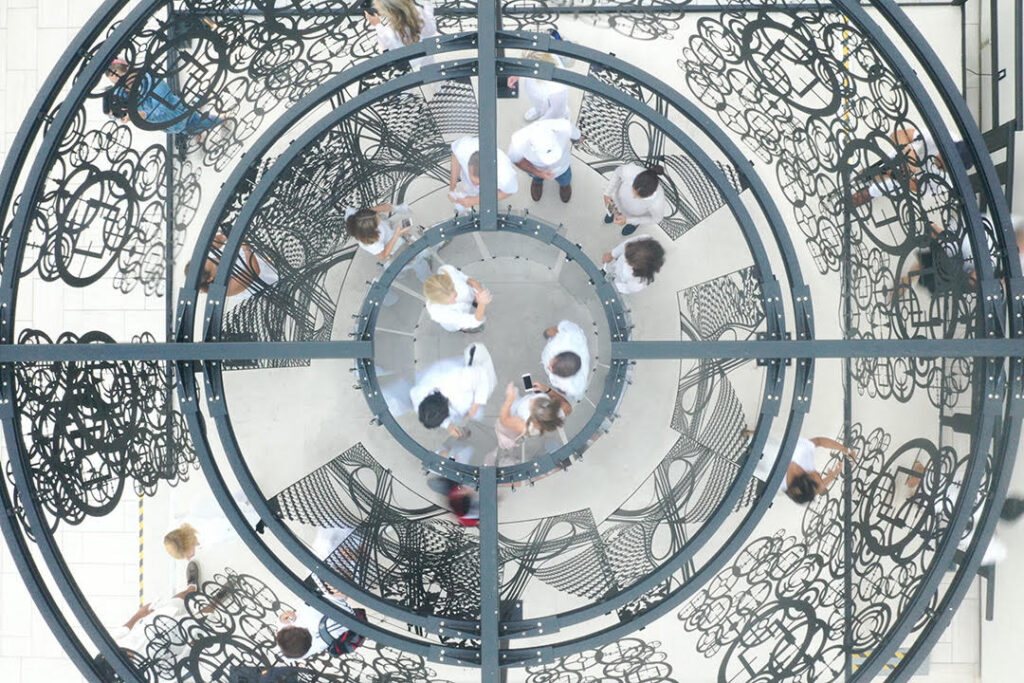
Her varied background inspired her to study international relations at Scripps College in Claremont (graduating in 1983). Yet her lifelong love of art drew her to look at and study visual expressions of life, wherever she happened to be, and to eventually become an artist herself.
After working in Washington D.C. in international relations for nearly a decade, Turk realized that her destiny was to be an artist. She left her job and enrolled full-time in the Rinehart School of Sculpture, Maryland Institute College of Art, using her savings for tuition. Soon after receiving her MFA in 1994, she began exhibiting her work in the Capitol’s galleries. These included the Baumgartner Gallery, where she was invited to display her work alongside the sculptures of Louise Bourgeois.

Turk decided to create sculptures from marble, and remarkably discovered cast-off stone from the 19th century construction of the Lincoln Memorial. She was adept at sculpting marble and found innovative ways to push the boundaries of the material’s limits. Her early forays into honing the marble with drills and sanders led her to explore the stone’s simultaneously durable and delicate qualities, a journey that continues to this day. “Stone affords a timeless conversation, as it will last longer than I will,” she says. “I give new life to old materials, reshaping the stone, pushing its technical boundaries.” Her inspirations for her sculptures include mandalas, skeletal structures, sacred geometry, textiles like lace, the golden mean and scientific principles.

In the mid-1990s, Turk moved to New York City where she created sculptures at a small studio, while absorbing the City’s many artistic offerings. In 2000, she exhibited her work at the illustrious Hirschl & Adler Galleries on Manhattan’s Upper East Side, in the exhibition, “New York Classicism, Now.” (This gallery continues to represent her and planned to display her current work, but that show was postponed due to the current pandemic.)
After a half dozen years in the City, 9-11 occurred and Turk was drawn to her roots, often visiting her childhood home in Newport Beach. She soon moved into her own residence nearby, while maintaining a New York apartment. This lifestyle, combining the best of the West and East Coasts, feeds her intellectual, philosophical and visual inspiration.

Turk’s exploration of the art-science relationship helped her win a MacArthur Fellowship award (known as a “genius grant”) in 2010 and a Smithsonian Artist Research Fellowship (SARF) in 2011. The latter brings artists and scholars together to explore connections between science, history, art and culture. During her SARF residency, Turk had access to the Smithsonian Natural History Museum’s vast collection of specimens. Her interest was mainly in shells, as the essential component of marble and shells is calcium. While looking at the structure and strength of these specimens, she began creating patterns for her own marble sculptures.

She had access to the Smithsonian’s equipment, and used its X-ray cameras (normally used to photograph fish) to capture the symmetrically shaped shells. She photographed each individual shell one to 64 times, then superimposed the images to reveal their inner structures. The resulting photographic work evokes the beauty and symmetry of her sculptures.
After leaving SARF, Turk worked with Irvine-based Luna Sciences Corporation to print her images on non-glare material and then illuminate each piece with numerous LED lights, bringing out the myriad details of each shell. She exhibited 16 of these pieces at SCAPE Gallery in Corona del Mar in 2014.
In 2018, Turk presented her Shoreline Project on Laguna’s Main Beach as part of Laguna Art Museum’s yearly Art & Nature festival. The evening performance featured one thousand volunteer performers, each carrying an LED-lit umbrella decorated with one of her X-Ray Mandalas. The performers walked, skipped and danced along the beach in spontaneous and choreographed movements. Their mission, she says, was “to create experiences where strangers become neighbors and remember optimism along the way.”
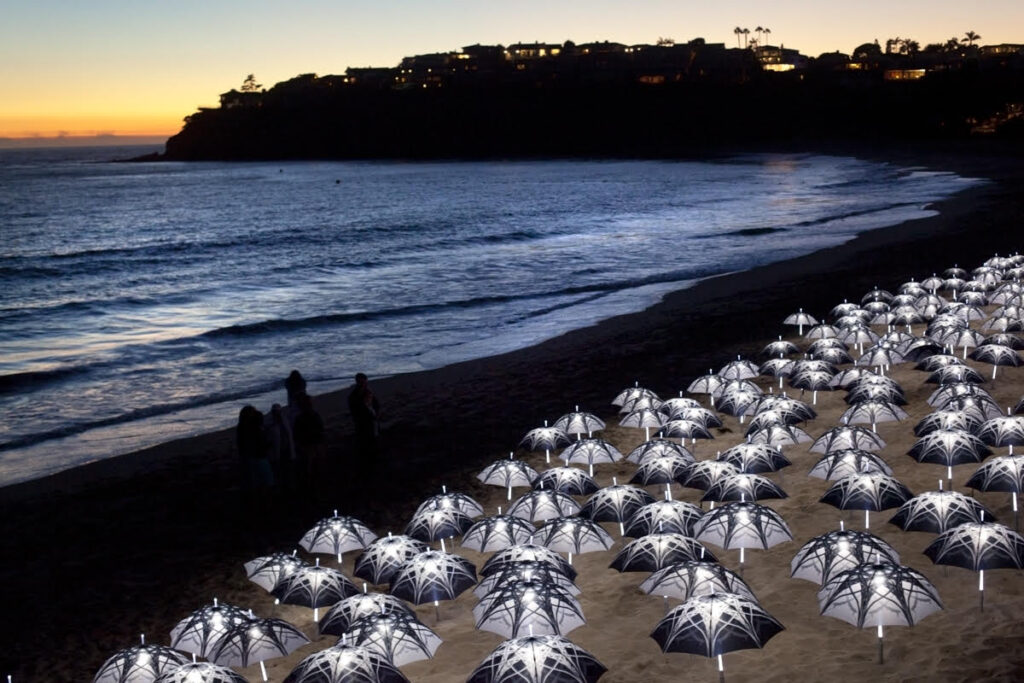

Turk’s most recent series—Tipping Point – Echoes of Extinction—of sculptural pieces extolls extinct and endangered birds. Using extinct birds as just one example of our destructive path on this planet, Turk explores environmental issues while engaging technology, history, place, and visually entrancing artworks.
These pieces, created from stacked, circular carved segments of wood, aluminum, 3-D printed ABS filament and bronze, are inspired by the recorded sounds of these rare birds, as catalogued by the Ornithology Lab at Cornell University. “They are physical renditions of sound,” Turk explains. For some of the birds that were extinct before recordings were possible, Cornell provided the most likely parallel genus. The voices of all birds represented are available to be heard as you view them through a scannable QR code.
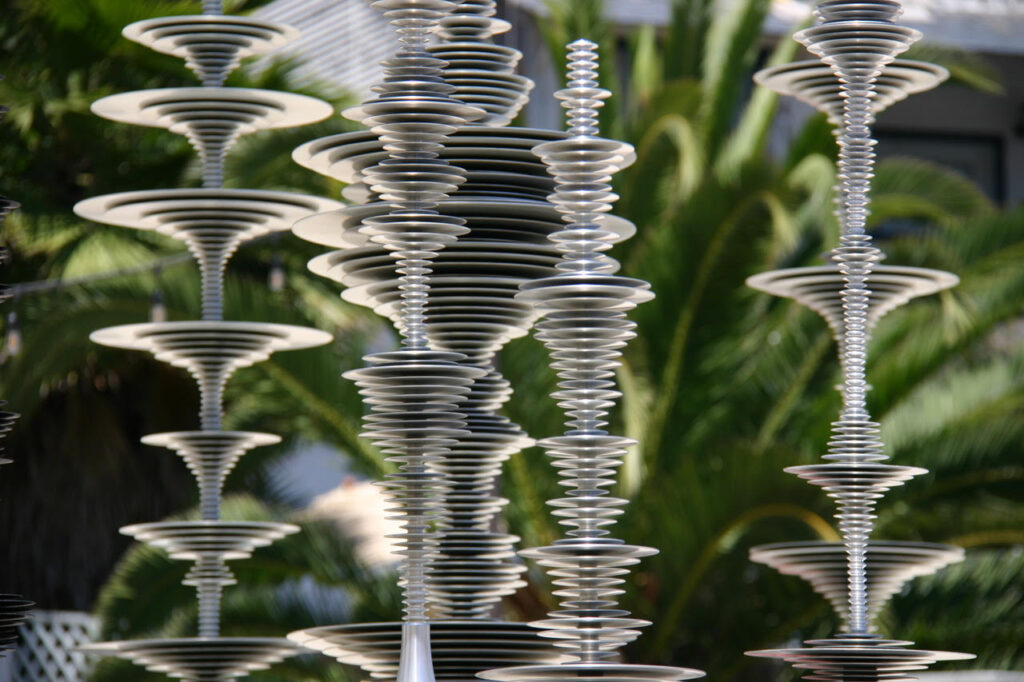
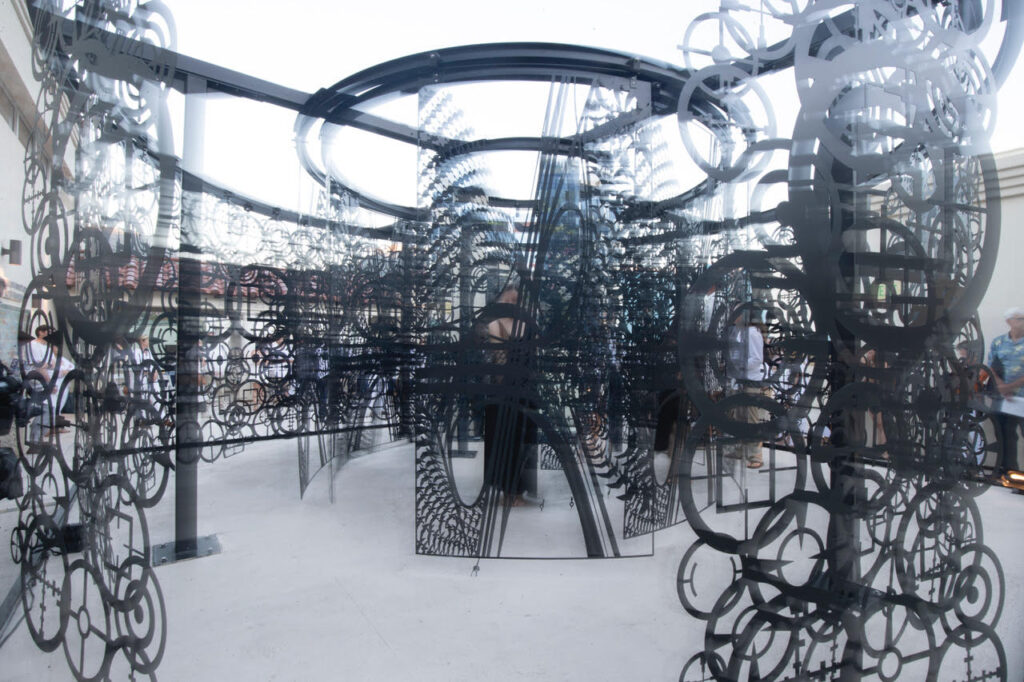
The gorgeous vertical sounds sculptures were exhibited at the Catalina Island Museum from 2019 to 2020, and are displayed informally at her Logan Creative studio. Turk also hopes to show the work at Hirschl & Adler Galleries in the fall.
“I was thinking about extinction and negative space,” Turk explained. “How is ‘editing and, or re-invention’ possible without total collapse? Is it possible to instigate deeper conversations without fear and anger? Starting with birds as an accessible symbol was a doorway. I moved from the shape of the bird to the shape of the bird’s sound.”
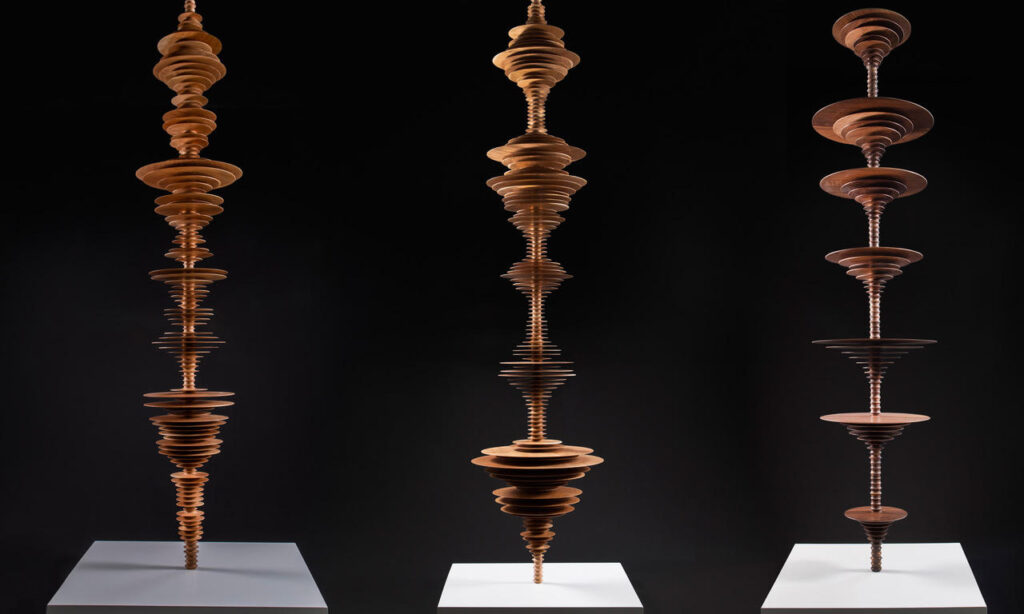
Throughout Turk’s larger oeuvre, she constantly explores structure and emptiness. “The marble sculpture is powerful because of what is not there,” she says. “The sounds taken from recordings at the Macaulay Library, Cornell Lab of Ornithology are of extinct and endangered birds. Sound is ethereal at its essence. The works’ power increases as more sculptures are created, becoming a field, thus reflecting increased extinction and more emptiness.”
With her indelible artistic drive, her projects continue to connect conceptual and tactile elements of life on this planet while inspiring viewers to feel, think, and experience the world and their place in it more deeply and honestly.



Sorry, the comment form is closed at this time.